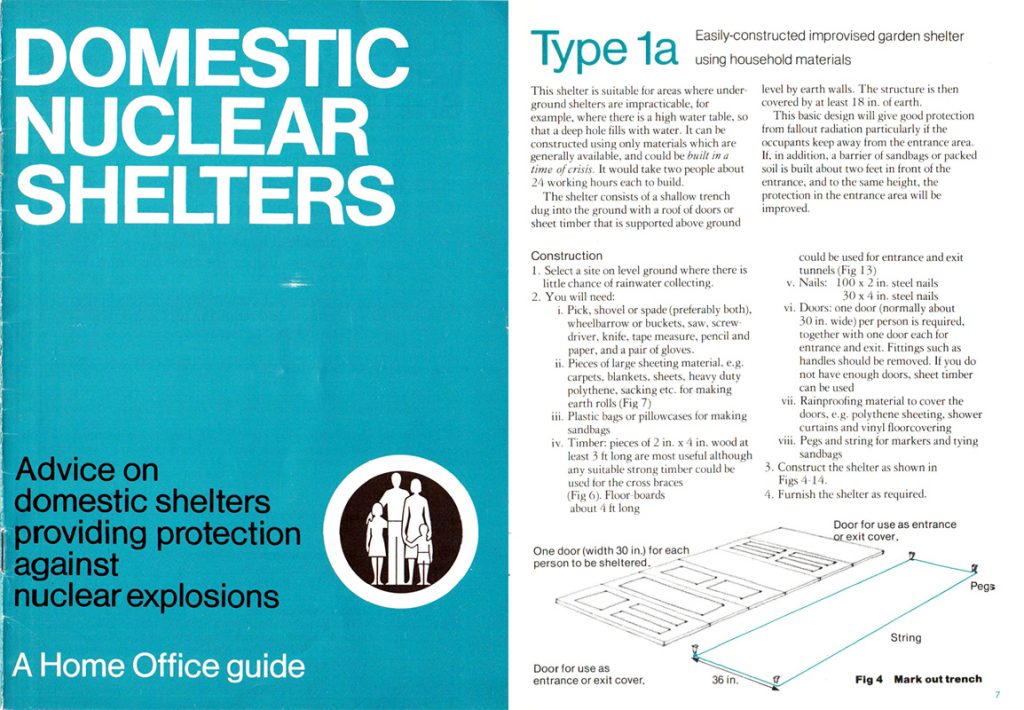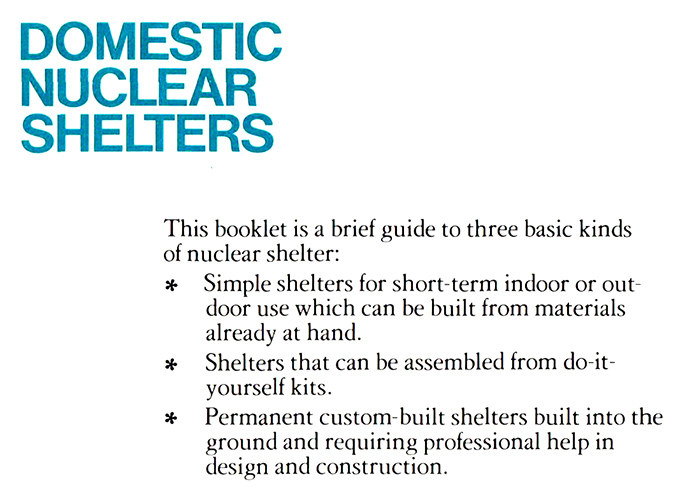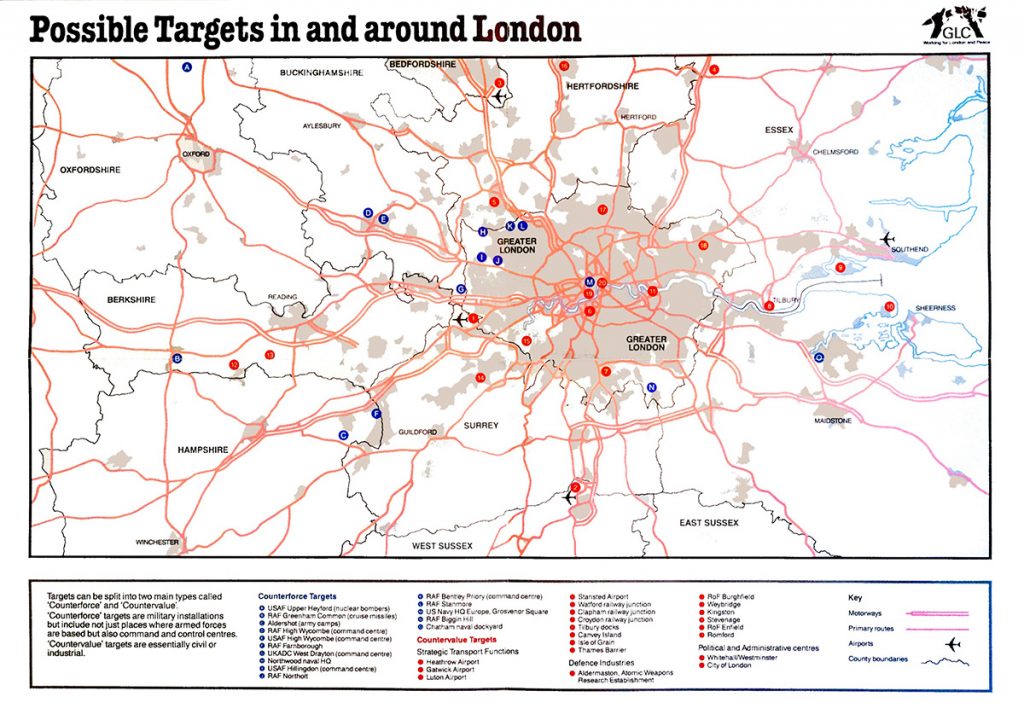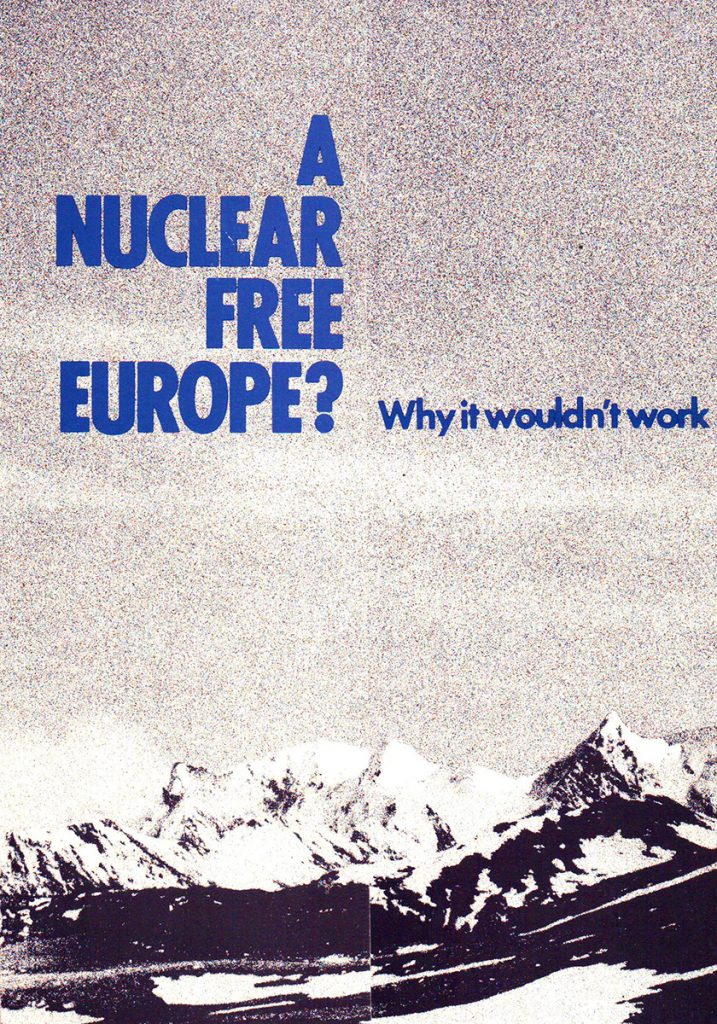
Domestic Nuclear Shelters was the UK government’s attempt to bring nuclear bunkers to the masses.
Whether you wanted a deluxe, professionally-installed bunker, or would make do with a hole in the ground with a couple of doors for a roof, this guide had you covered (in more ways than one).

It was published in 1981, and – as you may have spotted from the ‘nuclear family’ symbol on the cover – was part of the same public information campaign as the ill-fated Protect and Survive.
There were two publications under this name – Domestic Nuclear Shelters, a thin A5 pamphlet, and Domestic Nuclear Shelters: Technical Guidance, a beefier A4 book. The former was intended as the most basic introduction to bunker-building for ordinary householders, while the bigger tome was aimed at tradesmen and engineers (and maybe the more dedicated/paranoid amateur).





